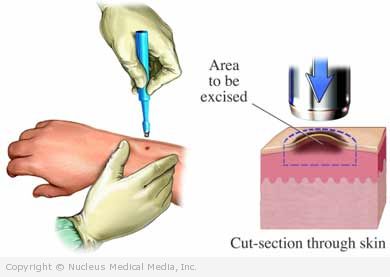(Fish Scale Disease; Xeroderma)
Ichthyosis – Definition
Ichthyosis is a dry skin condition. There are two general types:
- Inherited ichthyosis (several forms exist) — dryness and scaling of the skin due to hereditary factors
- Acquired ichthyosis — thickening and scaling of the skin that is not inherited but is associated with certain medical disorders
Ichthyosis – Causes
Inherited ichthyosis is caused by a genetic defect that is passed from parent to child or that occurs spontaneously.
Acquired ichthyosis is relatively rare, but may be caused by any of the following:
- Leprosy (extremely rare in the US)
- Underactive thyroid
- Lymphoma ( Hodgkin’s, Non-Hodgkin’s)
- Sarcoidosis
- AIDS
Ichthyosis – Risk Factors
A risk factor is something that increases your chance of getting a disease or condition. Risk factors for ichthyosis include:
- Family member with ichthyosis
- Cold weather
- Frequent or prolonged bathing, especially in hot water
- Harsh soaps or detergents
- Soaps or lotions containing certain scents or perfumes
Ichthyosis – Symptoms
Ichthyosis can develop on any part of the body, but most often occurs on the legs, arms, or trunk. The symptoms can vary from mild to severe. In severe cases, the condition may be disfiguring. Symptoms may include:
- Dry, flaking skin
- Scaling of skin that gives skin the appearance of fish scales
- Shedding of layers of the skin
- Itching of skin
- In severe cases, scarring and/or infection due to rubbing and scratching of scales or blisters
With certain rare types of inherited ichthyosis, symptoms:
- Appear immediately at birth
- Are extremely severe, covering the entire body
- Cause severe complications or death
Ichthyosis – Diagnosis
The doctor will ask about your symptoms and medical history, and perform a physical exam. The diagnosis of ichthyosis is usually based on signs and symptoms of the disorder. Rarely, blood tests or a skin biopsy may be required.
Ichthyosis – Treatment
Since there is no cure for ichthyosis, treatment consists of managing the symptoms. Most treatment is aimed at keeping the skin moist. In severe cases, medication may be prescribed. For the acquired form, treatment that lessens the severity of the underlying noninherited condition may also help lessen the symptoms of the associated ichthyosis.
Moisturizing Skin
Many types of moisturizing ointments, lotions, and creams are used to lessen or alleviate symptoms of ichthyosis. These include:
- Petroleum jelly
- Mineral oil
- Creams, lotions, and ointments containing vitamin A
- A large variety of nonprescription, unscented moisturizers
For ichthyosis that causes scaling:
- Solutions or creams with lactic or salicylic acid or urea may help.
- In some cases, doctors may suggest wrapping affected areas with a plastic or cellophane “bandage” after applying moisturizing agent. Such bandages should not be used on children.
Medications
In severe cases, drugs are sometimes prescribed, including:
- Etretinate and isotretinoin — These medications are retinoids, which are derivatives of vitamin A; excess amounts of vitamin A can be harmful.
- Antibiotics (if the skin becomes infected)
- Disinfecting soaps (eg, chlorhexidine)
Ichthyosis – Prevention
There are no guidelines for preventing the development of ichthyosis. However, steps to prevent this condition from getting worse include:
- Bathing less often
- Applying nonscented moisturizing agents regularly and frequently (especially in winter)
- Using only mild soap
- Avoiding:
- Harsh soaps
- Soaps with scents or perfumes
- Skin contact with detergents
- Cold, dry weather (when possible)

